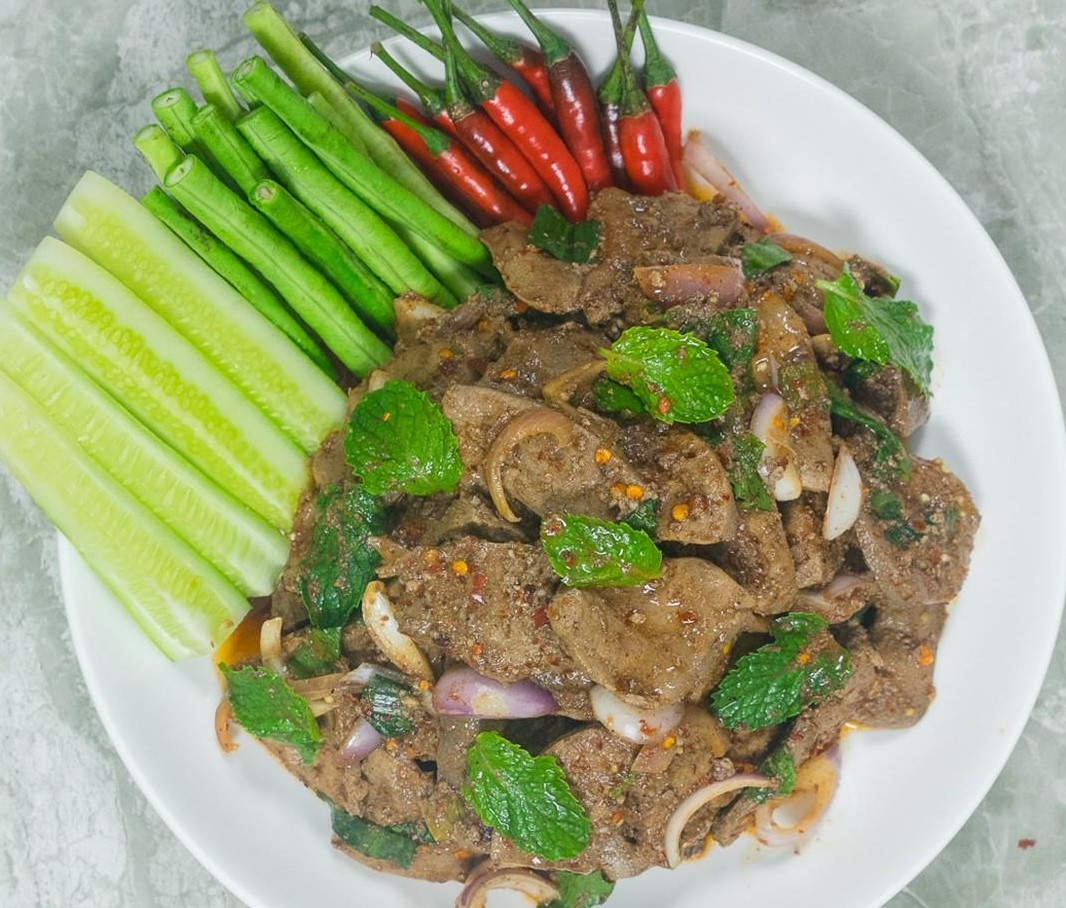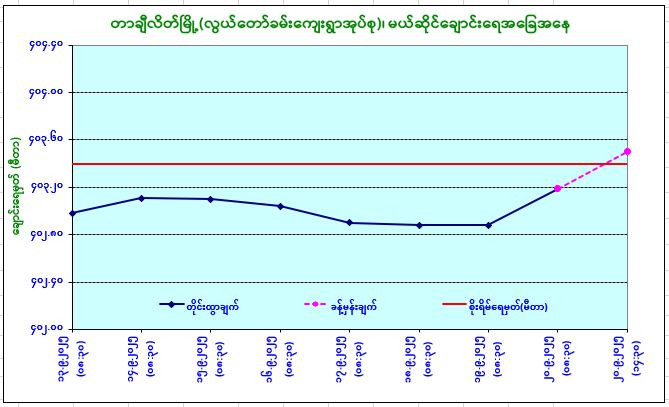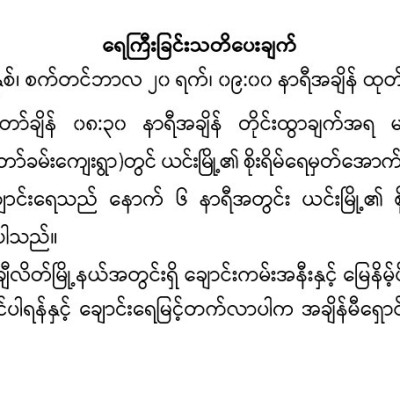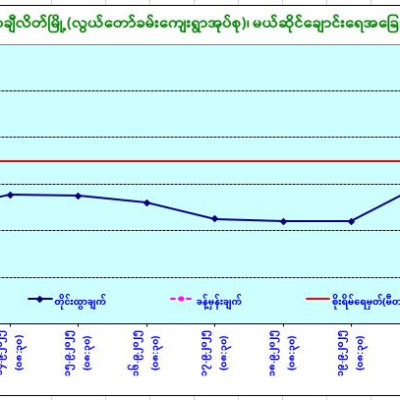Discover postsExplore captivating content and diverse perspectives on our Discover page. Uncover fresh ideas and engage in meaningful conversations
#နတ်ပြည်ကို_အထင်မကြီးနဲ့
~~~~~~~~~~~~~~~~~~~~
ဆားတောင်ဆရာတော်ကြီး အနာဂါမ် ဖြစ်ပြီးတဲ့နောက် တစ်ညမှာ နတ်သားတစ်ပါးက ဆရာတော်ကြီးကို လာရောက် ဖူးမျှော်ပါတယ်။
#ဆရာတော်
- ဘာကိစ္စကြောင့် လာသနည်း ?
#နတ်သား
- မှန်လှပါ၊ လူ့ဘဝက တော်စပ်ခဲ့ဘူးသော ဆရာတော်၏ မယ်တော် ဖြစ်ကြောင်းပါ ဘုရား။
#ဆရာတော်
- ဘယ်ကုသိုလ်ကြောင့် နတ်ပြည်သို့ ရောက်သနည်း ?
#နတ်သား
- မှန်လှပါ၊ လူ့ဘ၀မှ စုတေရာ ပြိတ္တာဘုံသို့ ရောက်ရှိကြောင်း၊ သားတော် ဆရာတော်၏ နေ့စဉ် ပို့သသော မေတ္တာ၊ ပေးဝေသော အမျှကို ရသဖြင့် ဝဋ်ကြွေးများ ကြေကုန်ရာ ယာမာနတ်ပြည်သို့ ရောက်ရှိပြီး နတ်သား ဖြစ်နေကြောင်း လျှောက်ထားလေသည်။
ယခုဘ၀ မယ်တော်က လျှောက်ထား၍ သူ၏ မေတ္တာအားကြောင့် နတ်သားဖြစ်ကြောင်း သိရသဖြင့် ဆရာတော်ကြီးမှာ ဝမ်းမြောက်ဝမ်းသာ ဖြစ်ရတော့သည်။
#ဆရာတော်
- ဒါယကာကြီး၊ တရား အားထုတ်ပါလား။ တရား အားထုတ်ရင် သံသရာကနေ လွတ်မြောက်နိုင်ပါတယ်။
#နတ်သား
- မှန်လှပါ ဘုရား။ တရားကို ကြိုးစားပြီး အားထုတ်လျှင် တရားထူးရနိုင်မှန်း သိသော်လည်း အရှင်ဘုရားထံ ရောက်ရှိစဉ်သာ တရားကို သတိရပြီး နတ်ပြည်သို့ ပြန်ရောက်လျှင် ကိလေသာအာရုံ အလွန်များသဖြင့် တရားကို သတိမရ၊ အားမထုတ်နိုင်ကြောင်း လျှောက်ထားပါသည်။
နတ်ပြည်ရောက်မှ တရား အားထုတ်ဖို့ စိတ်ကူးထားသူများ သတိပြုဖွယ် ကောင်းလှပါ၏။
🙏ဆားတောင်ဆရာတော်ကြီး၏ ထေရုပ္ပတ္တိနှင့် ကိုယ်တွေ့ ဖြစ်ရပ်ဆန်းများ🙏

ရေဝက်’ မျိုးမပျောက်ရေး ပူးပေါင်းပါဝင် ကူညီပေး
*****************************************
ပင်လယ်ရေနေ နို့တိုက်သတ္တဝါ (Marine Mammals) များဖြစ်ကြသော မြန်မာနိုင်ငံရှိ လောင်းမန်းနုတ်သီးပါ ဝေလငါး၊ ကျောဘို့ပါလင်းပိုင်၊ ကြောင်လိမ်ဂျွန်းထိုးလင်းပိုင်၊ အပူပိုင်းဒေသ လင်းပိုင်ပြောက်၊ ပုလင်းနှုတ်သီးလင်းပိုင်၊ ဧရာဝတီလင်းပိုင်၊ ကျောရေယက်မဲ့လင်းရှူး နှင့် ရေဝက်မျိုးစိတ်များမှာ မျိုးသုဥ်းရှားပါးရေနေ နို့တိုက်သတ္တဝါ စာရင်းတွင် ပါဝင်နေပါသည်။
ယင်းတို့အထဲမှ ပင်လယ်နို့တိုက်သတ္တဝါမျိုးနွယ်စိတ်များထဲတွင် မျိုးသုဥ်းရှားပါးစာရင်းဝင်ဖြစ်နေသည့် ရေဝက် ( Sea cow or Manatee) မှာ ယခုအခါ အကြောင်း အမျိုးမျိုးဖြင့် အသက်အန္တရာယ်ခြိမ်းခြောက်ခြင်း ပိုမိုခံနေရပါသည်။
ရေဝက်မျိုးစိတ်တို့သည် အင်ဒိုပစိဖိတ်ဒေသ၊ အပူပိုင်းနှင့် သမအပူပိုင်းဒေသများရှိ ပင်လယ်ကမ်းရိုးတန်းတစ်လျှောက် ရေတိမ်ပိုင်းတွင်နေထိုင်ကျက်စားကြသည်။
သမအပူပိုင်း ကမ်းရိုးတန်းဒေသတစ်လျှောက် အာဖရိကတိုက်တောင်ပိုင်း၊ ပင်လယ်နီဒေသ၊ ပါရှန်းပင်လယ်အော်အတွင်း သီရိလင်္ကာနိုင်ငံနှင့် အိန္ဒိယနိုင်ငံ အနောက်ပိုင်း၊ အင်ဒိုနီးရှားနိုင်ငံ၊ ပစိဖိတ်ပင်လယ်အတွင်းမှ ကျွန်းများ၊ ဂျပန်နိုင်ငံ၊ ကျူရှူးကျွန်း၊ သြစတြေးလျတိုက်တောင်ပိုင်း၊ အလယ်ပိုင်း၊ မြောက်ပိုင်းဒေသများတွင် နေထိုင်ကျက်စားကြပါသည်။
ရေဝက်များကို လူသားတို့က သတ်ဖြတ်ကာ အဆီ၊ အသား၊ အရိုးနှင့် အရေခွံရယူမှုတို့ကြောင့် ယနေ့အချိန်တွင် မျိုးသုဉ်းလုနီးပါး ဖြစ်လာခဲ့ရခြင်းဖြစ်သည်ကို တွေ့ရှိလာရသည်။
*စိုက်ပျိုးရေး၊ မွေးမြူရေး၊ ရေလုပ်ငန်းနဲ့ ပတ်သက်တာ အစိိမ်းရောင်လမ်းဆော့ဝဲမှာမေးပါ*
ထို့ပြင် ရာသီဥတုပြောင်းလဲမှု ဖြစ်စဉ်ကြောင့် ဖြစ်ပေါ်လာသည့် အပူချိန် မြင့်မားမှု၊ ပင်လယ်ရေထုညစ်ညမ်းမှုတို့ကလည်း ၎င်းတို့ အသက်ရှင်ရပ်တည်မှုအတွက် အခက်အခဲဖြစ်ပေါ်လျက် ရှိနေသည်။
တစ်ဆက်တည်းမှာပင် ကမ်းရိုးတန်းသွား သင်္ဘောကြီးများ၏ အန္တရာယ်နှင့် ငါးဖမ်းသင်္ဘောများ၏ အန္တရာယ်များကလည်း ၎င်းတို့၏ မျိုးဆက်ပျက်သုဉ်းမှုကို ဖြစ်ပေါ်စေခဲ့ပါသည်။ ထို့ကြောင့်လည်း ရေဝက်များကို ကာကွယ်စောင့်ရှောက်ပေးရန် သက်ဆိုင်ရာနိုင်ငံများက ထိန်းသိမ်းစောင့်ရှောက်မှုများ ပြုလုပ်လာကြသည်။
ရေဝက်မျိုးစိတ်ဝင်အားလုံးလိုလိုမှာ အပြည်ပြည်ဆိုင်ရာ ထိန်းသိမ်းမှုအဆင့် (CITES) တွင် ပါဝင်ပြီး အန္တရာယ်ကျရောက်နေသော မျိုးစိတ်စာရင်းတွင် ပါဝင်ပါသည်။
ငါးလုပ်ငန်းဦးစီးဌာနအနေဖြင့် ရေနေနို့တိုက်သတ္တဝါများအား ထိန်းသိမ်း ကာကွယ်နိုင်ရန်ကိစ္စ နှင့် ပတ်သက်၍ ညွှန်ကြားချက်အမှတ်(၁/၂၀၁၈) နှင့် ညွှန်ကြားချက်အမှတ် (၅/၂၀၂၂)တို့ကို ထုတ်ပြန်၍ မျိုးသုဥ်းရှားပါး ရေနေနို့တိုက်သတ္တဝါများအား တစ်ကောင်လုံးသော်လည်းကောင်း၊ ယင်းတို့၏ ခန္ဓာကိုယ်အစိတ်အပိုင်းများကိုသော်လည်းကောင်း ဖမ်းဆီးခြင်း၊ သတ်ဖြတ်ခြင်း၊ ဒဏ်ရာအနာတရ ဖြစ်စေခြင်း၊ လက်ဝယ်ထားရှိခြင်း၊ သယ်ယူခြင်း၊ လွှဲပြောင်းခြင်း၊ ရောင်းချခြင်း၊ထောက်ခံချက်မပါဘဲ ပြည်ပသို့ တင်ပို့ခြင်းများ မပြုလုပ်ကြရန်၊ မတော်တဆအသက်ရှိလျက် ဖမ်းဆီးရမိပါက အမြန်ဆုံးပြန်လွှတ်ပေးရန်နှင့် ညွှန်ကြားချက်အားလိုက်နာရန် ပျက်ကွက်ပါက မြန်မာ့ပင်လယ်ငါးလုပ်ငန်းဥပဒေနှင့် အညီ အရေးယူဆောင်ရွက်သွားမည်ဖြစ်ကြောင်း ညွှန်ကြားထားရှိပြီး ဖြစ်ပါသည်။
ရေဝက်များကို ကမ်းခြေတွင် ပိုက်ဝမ်းပူများ (ကမ်းဆွဲပိုက်များ)၊ လိပ်ကျောက်ပိုက်၊ ကျောက်ပုစွန်ပိုက်၊ မျှောပိုက်များဖြင့်တော့ တစ်ခါတစ်ရံသာ ဖမ်းဆီးရမိကြောင်း သိရှိရပါသည်။
ပင်လယ်မြက်ခင်းပြင်များအတွင်းရှိ ထောင်ထားသော လိပ်ကျောက်ပိုက်၊ ကျောက်ပုစွန်ပိုက်၊ မျှောပိုက်များနှင့်တော့ အများဆုံးငြိတွယ်မိပြီး သေဆုံးတတ်ကြသည်။
ပင်လယ်ပြင်အတွင်းသို့ အမှိုက်များ စွန့်ပစ်ခြင်းကြောင့် ရေထုညစ်ညမ်းမှုများ ဖြစ်ပေါ်လာပြီး ၎င်းတို့ဂေဟစနစ်နှင့် မူရင်းဒေသများ ပျက်စီးခြင်း၊ ပင်လယ်မြက်ခင်းများအပေါ် နုန်းနှင့် အနည်အနှစ်များ ဖုံးလွှမ်းခြင်းကြောင့် ပင်လယ်မြက်ခင်းများ ပျက်စီးသွားခြင်းတို့ကလည်း ရေဝက်များရှင်သန်မှုအပေါ် ထိခိုက်နေပါသည်။
ရှားပါးမျိုးစိတ်ဝင် ရေဝက်များကြောင့် သဘာဝအခြေခံခရီးသွားလုပ်ငန်းများ ဖွံ့ဖြိုးလာခြင်းမှတစ်ဆင့် ဒေသခံပြည်သူများ၏ အသက်မွေးဝမ်းကျောင်းလုပ်ငန်းအခွင့်အလမ်းများ ရရှိလာနိုင်မည်ဖြစ်ပါသောကြောင့် မျိုးမသုဥ်းစေရေးအတွက် အဖက်ဖက်မှ ပူးပေါင်းပါဝင်ကူညီပေးကြပါရန် တိုက်တွန်းရေးသားလိုက်ရပါသည်။

" လောက " မှာ..
ကိုယ့်ကို စိတ်ညစ် အောင်လုပ်တာလည်း " ကိုယ်ပါပဲ "
ကိုယ် ကို ပျော်ရွှင်အောင် လုပ်ပေး နိုင်တာလည်း " ကိုယ်ပါပဲ "
ကိုယ့် ကို အောင်မြင်အောင် လုပ်နေတာလည်း ကိုယ်ပါပဲ "
ကိုယ့် ကို ကျရှုံးအောင် ပြန်လုပ်တာလည်း " ကိုယ်ပါပဲ "
" အဓိက " က ကိုယ့်ရဲ့ " စိတ် " ပါပဲ စိတ် ဆိုတာ အရမ်းကြောက်ဖို့ကောင်းပါတယ်။
" စိတ် "ကောင်းထားတတ်ရင် တန်ဖိုးရှိတဲ့ " ဆေးတစ်ခွက် " ဖြစ်နိုင်ပြီး
မကောင်းတဲ့ " စိတ် "တွေ ထားမယ်ဆိုရင်တော့ ကြောက်စရာကောင်းတဲ့ " ဘေး " အန္တရာယ် တစ်ခု ဖြစ်သွားနိုင်ပါတယ်
ကဲ့ အဲတော့ အရေးအကြီး ဆုံးက မိမိကိုယ် မိမိ စိတ်ချမ်းသာအောင်ထားဖို့နဲ့ တန်ဖိုး ရှိအောင်နေထိုင်ဖို့ပဲ မဟုတ်လား
ဥပမာ - ရေနွေးပူ တစ်ခွက်ကို သင် ကြာကြာ
ကိုင်ထားကြည့်လိုက်ပါ သင်ကိုင်ထားသ၍ ကတော့ အဲ့ဒီ " အပူဒဏ် "ကို ကြိတ်မှိတ်ပြီး ခံစားနေရဦးမှာပဲ
သင် လွှတ်ချ နိုင်လိုက်မှသာ သင်အပူဒဏ်နဲ့ ဝေးသွားပြီး အဆင်ပြေသွားမှာဖြစ်တယ်
ဒီလိုပဲ သင့်မှာရှိတဲ့ စိတ်ညစ်စရာတွေကို သင်တွေး နေသ၍ စိတ်ညစ်စရာတွေဟာ ပိုကြီးထွားလာပြီး သင်ဆက်ပြီး
စိတ်ဆင်းရဲနေရဦးမှာပါ
ဒါတွေကို မတွေးတော့ပဲ ဖြေရှင်းဖို့နည်းလမ်းရှာမှ သာ အဆင်ပြေမှာပါ
တစ်ချို့က အိမ်အတွက် စိတ်ညစ်ကြတယ်
တစ်ချို့က ချစ်သူရည်းစားအတွက် / တစ်ချို့က အလုပ်အတွက် / ငွေကြေးပြသနာအတွက် အစရှိတယ် စိတ်ညစ်မှုမျိုးစုံပေါ့။
ဒါတွေကို ထိုင်ပြီးတော့ စိတ်ဆင်းရဲနေတာ
ကိုယ့် ကို ကိုယ်
" ပြစ်ဒ-ဏ် " ပေး အကျဉ်းချနေတာပါ " အဓိက " ဘာလုပ်ရမှာလည်း ဖြေရှင်းနိုင်မဲ့ နည်း လမ်းရှာဖို့ပါပဲ
* အကျိုးရှိရင် အကြောင်းရှိသလို "
အခက်အခဲ ရှိရင် ဖြေရှင်းလို့ရမဲ့ နည်းလမ်းဆိုတာ ရှိစမြဲပါ
သင်တို့လွန်ခဲ့တဲ့ ၂/၃ နှစ်တုန်းကလည်း စိတ်ညစ် ဖူးမှာပါ
ဒါတွေက ခုချိန်မှာ ရယ်စရာ တစ်ခုသာသာ
ဖြစ် သွားတာပဲလေ
အတွေ့အကြုံ နဲ့ သင်ခန်းစာ ဖြစ်သွားတာပဲလေ။
အပျော်တွေနဲ့ပဲ နေပါ / အပျော်တွေကို ဖန်တီးပါ / စိတ်ကို တတ်နိုင်သလောက် ပျော်အောင်ထားပါ။
" လောက " ကြီးက " စိန်ခေါ်မှု" တွေ
အရမ်းများတယ် ဆုံးရှုံးမှုဒ-ဏ်တွေ / ဝမ်းနည်းကြေကွဲမှုဒဏ် တွေ ကို သင်မခံနိုင် ရင် " စိန်ခေါ်မှု့" တွေ များတဲ့ * လောက" ကြီးကို ဘယ်လို ဆက်ပြီး ရင်ဆိုင်မ လဲ ??? စဉ်းစားပါ
" ကိုယ့် ကို ကိုယ် " T၊H၊A၊Yကြောင်းကြံတဲ့ နည်းနဲ့ ဖြေ ရှင်းမှာလား ??
ဒါဆို သင် " လုံလောက်တဲ့ " ရင့်ကျက်မှုမရှိသေး လို့ဆိုတာ
မမေ့ပါနဲ့
" လုံလောက်တဲ့ " ရင့်ကျက်မှုရှိသူတိုင်းဟာ " ကိစ္စ တိုင်း ကို ထည့်တွက်မနေကြပါဘူး
" ပူလောင်မှု" ကိုခံစားနေရတယ် ဆိုတာ "မေတ္တာ"
စိတ်မရှိလို့ပါ
ပြီးတော့ "အတ္တ" စိတ်ကြီးနေတာ မိမိ ကိုယ် မိမိ ချစ်တာ / မိမိ လောဘ ကို မိမိ မြှောက်ပေးနေတာ / မိမိ မာန ကို "ရှေ့တန်း တင်ပေးနေတာ ဒီတော့ ဒါတွေမဖြစ်အောင် / သင်စိတ်ညစ်စရာ တွေနဲ့ ဝေးသွားအောင် ဒီလိုစိတ်ထားကြည့်ပါ
{ ၁ )ခွင့်လွှတ်နားလည်ပေးကြည့်ပါ
( ၂ )ကိုယ်ချင်းစာစိတ်နဲ့ကြည့်ပါ
(၃ )အကောင်းမြင်စိတ်လေးနဲ့ ကြည့်ပါ
အရင်ဆုံး ငြိမ်းချမ်းသွားမှာက သင်ပါ
လူတစ်ယောက်ရဲ့ " အမှား "ကို မေ့ပစ်ခြင်းဟာလည်း အကောင်းဆုံး "ဂလဲ့စား ချေခြင်းတစ်မျိုးပါပဲ
" ကံဆိုးမ သွားရာ မိုးလိုက်လို့ရွာ " တဲ့ မိုးလည်း ( ၁၂ ) ရာသီ လုံးလိုက်မရွာ နိုင်ပါဘူး ( သူလည်းအားချင်မှအားမှာလေ )
smile emoticon
* မုန်တိုင်း " ပြီးရင်တော့ " လေပြေ " ရောက်လာစမြဲပါ
* အကောင်းဆုံး "တွေ လာဖို့ အဆိုးတွေ
အရင် လာလည်တာပါ
" နေရိပ် " ကို လိုချင်လို့နေပူထဲ ရပ်စောင့်နေရပါ လားလို့အကောင်းမြင်စိတ်လေးနဲ့တွေးကြည့်ပါ
ငါ " ပေ " ဖြစ်နေလို့ခံနေရတာ " တူ "ဖြစ်အောင် ကြိုးစားမယ် ဆိုတဲ့ စိတ်ဓါတ် မွေးကြည့်ပါ..
လူ့ဘဝ ဆိုတာ တစ်ကယ်တော့ " ခဏတာ " လေး ပါ
အဲ့ထဲမှာ သင်က ထမင်းစားဖို့အသက်ရှင်နေတာလား ? အသက်ရှင်ဖို့ ထမင်းစားနေတာလား ?
ဆိုတာ အရင်တွေးပါ.
"ကာဗွန် " ခြင်း တူရင်တောင် မီးသွေး အဖြစ်မခံပါနဲ့
တန်ဖိုးရှိတဲ့ " စိန် " ပဲ ဖြစ်အောင်ပဲကြိုးစားပါ
သင်အလုပ်တွေ လုပ်နေရင်းနဲ့ ပညာတွေဆက်ရှာ ပါ / အမြဲမပြတ် လေ့လာပါ / သင်ယူပါ /
ပြီးတော့ လူသားတွေ ကို အကျိုးပြု နိုင်တဲ့ " ပရဟိတ " တွေများများလုပ်ပါ
များများလှူပါ / ကူညီပါ / ဖေးမပါ / စိတ်ကောင်း ထားပါ / "ရိုးသားစွာ" ကြိုးစားပါ
ကဲ့ ဒါဆို သင့် ဘဝတစ်ခုလုံးအတွက် "တန်ဖိုး" ရှိ စွာနေထိုင်နိုင်တဲ့ " လူ " တစ်ယောက်ဖြစ်သွားနိုင်ပါတယ်။
#crd_to_owner_with_respectcrd
#အဆိမ့်အရသာဝက်အသည်းသုပ်
ဒါကတော့ ချက်ရလွယ်ကူပြီး အဆိမ့်အရသာရှိတဲ့ "Sweet Liver" အတွက် ချက်နည်းလေးပါ။
ပါဝင်ပစ္စည်းများ
(လှီးထားသောဝက်သားအသည်း 200 ဂရမ်
100 ml နို့ချိုအေး (နွားနို့)
ငါးငံပြာရည် လက်ဖက်ရည်ဇွန်း ၂ ဇွန်း
ငရုတ်သီးမှုန့် လက်ဖက်ရည်ဇွန်း ၂ ဇွန်း
ငရုတ်သီးခြောက်ထောင့် လက်ဖက်ရည်ဇွန်း ၂ ဇွန်း
ဆန်လှော်မှုန့် ထမင်းစားဇွန်း ၁ ဇွန်း
သံပရာရည် ၁ ဇွန်း
ကြက်ပြုတ်ရည်
လှီးထားသောနံနံပင် ၁ ဇွန်း
လှီးထားသော ရှမ်းနံနံ ၁ ဇွန်း
ပါးပါးလှီးထားသော ကြက်သွန်နီ ၁ လုံး
ပါးပါးလှီးထားသော ပူစီနံ ၁ဇွန်း)
နည်းလမ်း
(1. ဝက်အသည်းကို ဇလုံတစ်ခုထဲ ထည့်ပြီး နို့ချိုအေးနဲ့ ဆမ်းပေးပါ ပြီးရင် ရေခဲသေတ္တာထဲမှာ ၁ နာရီလောက် နှပ်ထားပါ။
2. ရေခဲတ္တောမှ ထုတ်ကာ အသည်းကို သေချာဆေးကြောပြီး ရေစစ်ထုတ်ကာ ဇကာဖြင့် ရေစစ်ထားပါ
3. ကြက်ပြုတ်ဟင်းရည်ဆူလာသည်အထိ အိုးတစ်လုံးထဲတွင် အလယ်အလတ်အပူဖြင့် အပူပေးပါ ထို့နောက် ဝက်အသည်းထည့်ပြီး ကျက်သည့်အထိ မွှေပေးပါ။
4. ပန်ကန်တစ်ခုထဲ ပြုတ်ထားသော ဝက်အသည်းထည့် သံပုရာရည်၊ ငါးငံပြာရည်၊ ငရုတ်သီးမှုန့်၊ ရှမ်းနံနံ ကြက်သွန်မြိတ်၊ နံနံပင် ဆန်လှော်မှုန့် ကြက်သွန်နီ ကြက်ပြုတ်ရည် ၁ဇွန်း ထည့်ပြီး အားလုံးကို သမအောင် မွှေပါ။
ဆလပ်ရွက် ဂေါ်ဖီ သခွားသီး လတ်ဆတ်သော အသီးအနှံ တို့နဲ့တွဲဖက်စားသုံးနိင်ပါတယ်
ထမင်းပူပူနဲ့ အလိုက်ဖက်ဆုံးပါပဲ)
✍✍"Sailu
ဟင်းချက်နည်းကောင်းများလေ့လာရန် Page ကို Like share and follow လုပ်ထားပေးကြအုံးနော် နောက်လည်း အစားသောက်နဲ့ပတ်သက်တဲ့ ဟင်းချက်နည်းလမ်းတွေတင်ပေးပါမယ်ဗျ...🥰
#cooking #recipe #burmesefoods #homemadefoods #easycooking
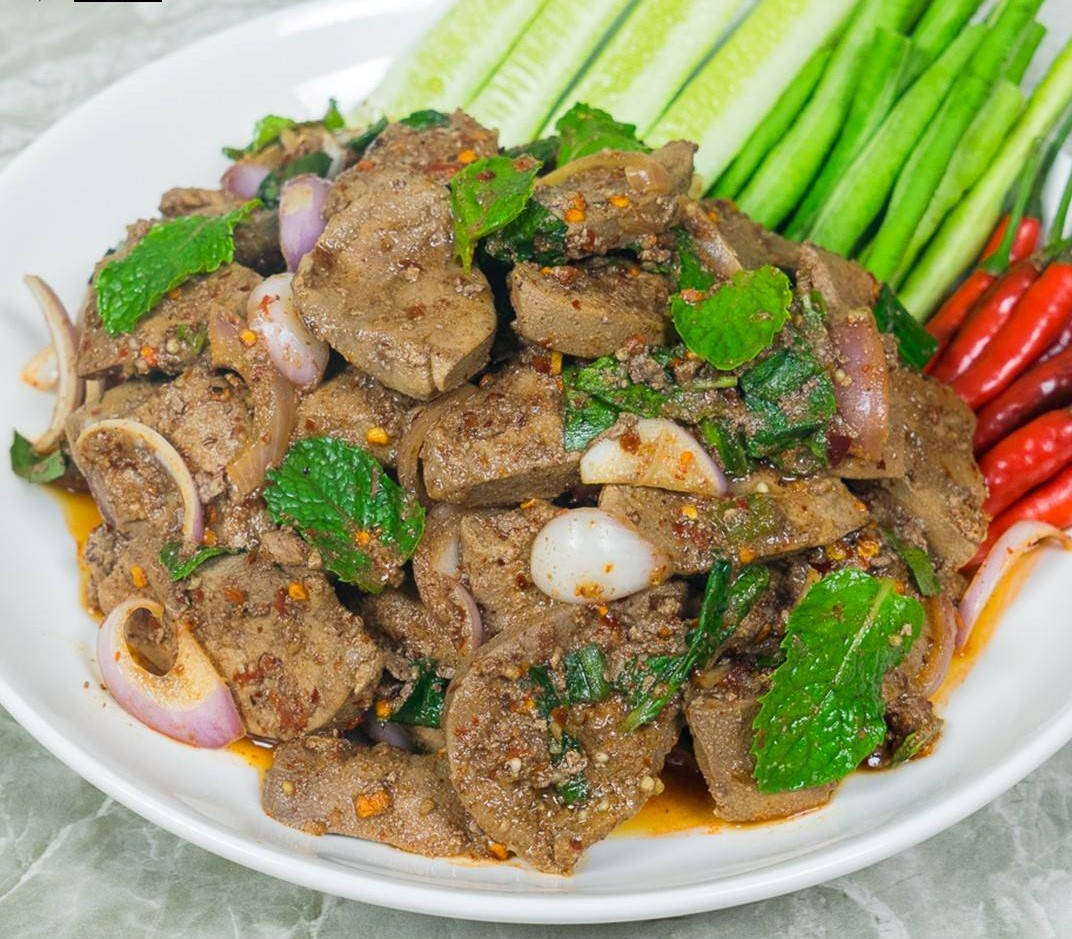
#အဆိမ့်အရသာဝက်အသည်းသုပ်
ဒါကတော့ ချက်ရလွယ်ကူပြီး အဆိမ့်အရသာရှိတဲ့ "Sweet Liver" အတွက် ချက်နည်းလေးပါ။
ပါဝင်ပစ္စည်းများ
(လှီးထားသောဝက်သားအသည်း 200 ဂရမ်
100 ml နို့ချိုအေး (နွားနို့)
ငါးငံပြာရည် လက်ဖက်ရည်ဇွန်း ၂ ဇွန်း
ငရုတ်သီးမှုန့် လက်ဖက်ရည်ဇွန်း ၂ ဇွန်း
ငရုတ်သီးခြောက်ထောင့် လက်ဖက်ရည်ဇွန်း ၂ ဇွန်း
ဆန်လှော်မှုန့် ထမင်းစားဇွန်း ၁ ဇွန်း
သံပရာရည် ၁ ဇွန်း
ကြက်ပြုတ်ရည်
လှီးထားသောနံနံပင် ၁ ဇွန်း
လှီးထားသော ရှမ်းနံနံ ၁ ဇွန်း
ပါးပါးလှီးထားသော ကြက်သွန်နီ ၁ လုံး
ပါးပါးလှီးထားသော ပူစီနံ ၁ဇွန်း)
နည်းလမ်း
(1. ဝက်အသည်းကို ဇလုံတစ်ခုထဲ ထည့်ပြီး နို့ချိုအေးနဲ့ ဆမ်းပေးပါ ပြီးရင် ရေခဲသေတ္တာထဲမှာ ၁ နာရီလောက် နှပ်ထားပါ။
2. ရေခဲတ္တောမှ ထုတ်ကာ အသည်းကို သေချာဆေးကြောပြီး ရေစစ်ထုတ်ကာ ဇကာဖြင့် ရေစစ်ထားပါ
3. ကြက်ပြုတ်ဟင်းရည်ဆူလာသည်အထိ အိုးတစ်လုံးထဲတွင် အလယ်အလတ်အပူဖြင့် အပူပေးပါ ထို့နောက် ဝက်အသည်းထည့်ပြီး ကျက်သည့်အထိ မွှေပေးပါ။
4. ပန်ကန်တစ်ခုထဲ ပြုတ်ထားသော ဝက်အသည်းထည့် သံပုရာရည်၊ ငါးငံပြာရည်၊ ငရုတ်သီးမှုန့်၊ ရှမ်းနံနံ ကြက်သွန်မြိတ်၊ နံနံပင် ဆန်လှော်မှုန့် ကြက်သွန်နီ ကြက်ပြုတ်ရည် ၁ဇွန်း ထည့်ပြီး အားလုံးကို သမအောင် မွှေပါ။
ဆလပ်ရွက် ဂေါ်ဖီ သခွားသီး လတ်ဆတ်သော အသီးအနှံ တို့နဲ့တွဲဖက်စားသုံးနိင်ပါတယ်
ထမင်းပူပူနဲ့ အလိုက်ဖက်ဆုံးပါပဲ)
✍✍"Sailu
ဟင်းချက်နည်းကောင်းများလေ့လာရန် Page ကို Like share and follow လုပ်ထားပေးကြအုံးနော် နောက်လည်း အစားသောက်နဲ့ပတ်သက်တဲ့ ဟင်းချက်နည်းလမ်းတွေတင်ပေးပါမယ်ဗျ...🥰
#cooking #recipe #burmesefoods #homemadefoods #easycooking
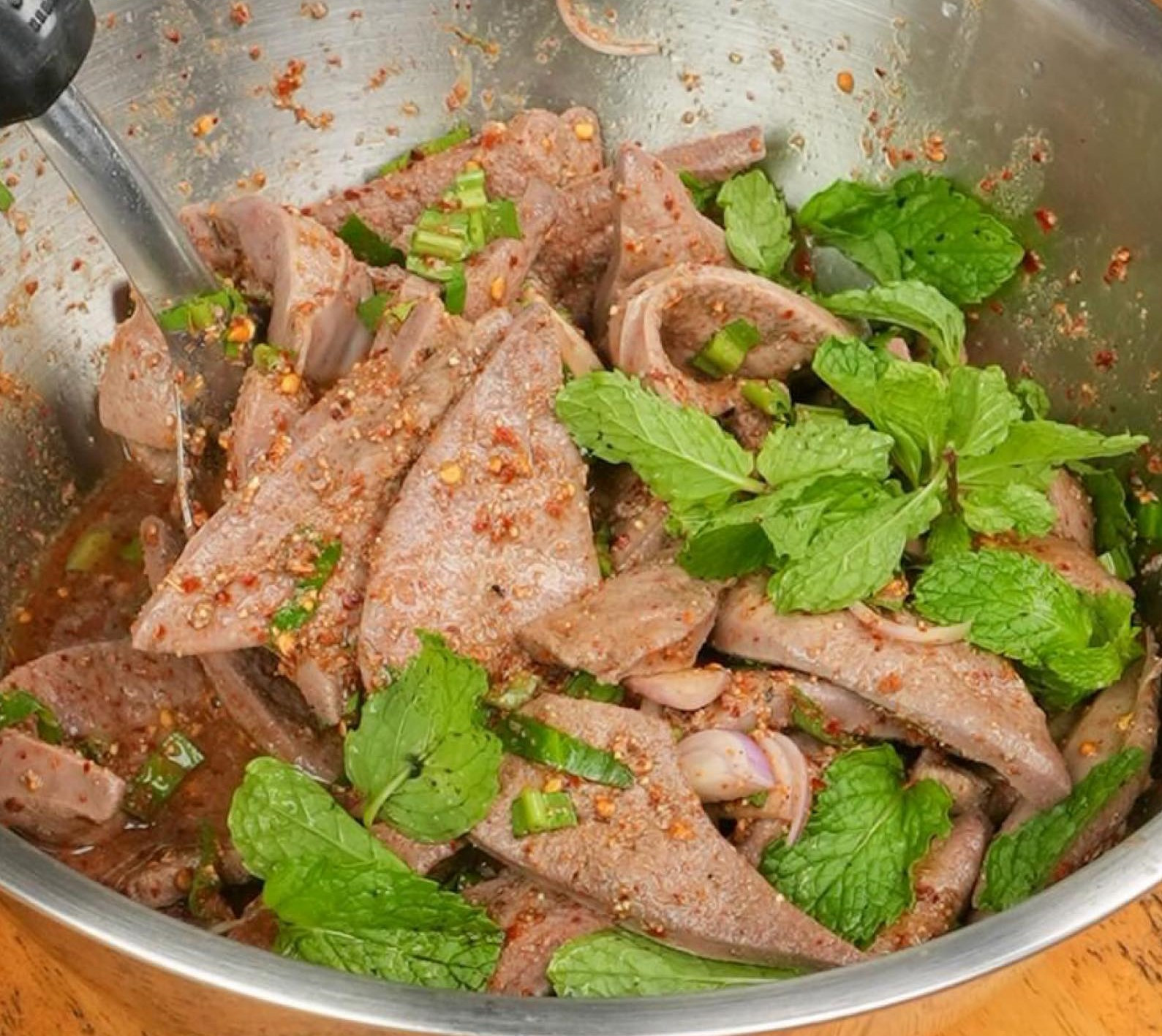
#အဆိမ့်အရသာဝက်အသည်းသုပ်
ဒါကတော့ ချက်ရလွယ်ကူပြီး အဆိမ့်အရသာရှိတဲ့ "Sweet Liver" အတွက် ချက်နည်းလေးပါ။
ပါဝင်ပစ္စည်းများ
(လှီးထားသောဝက်သားအသည်း 200 ဂရမ်
100 ml နို့ချိုအေး (နွားနို့)
ငါးငံပြာရည် လက်ဖက်ရည်ဇွန်း ၂ ဇွန်း
ငရုတ်သီးမှုန့် လက်ဖက်ရည်ဇွန်း ၂ ဇွန်း
ငရုတ်သီးခြောက်ထောင့် လက်ဖက်ရည်ဇွန်း ၂ ဇွန်း
ဆန်လှော်မှုန့် ထမင်းစားဇွန်း ၁ ဇွန်း
သံပရာရည် ၁ ဇွန်း
ကြက်ပြုတ်ရည်
လှီးထားသောနံနံပင် ၁ ဇွန်း
လှီးထားသော ရှမ်းနံနံ ၁ ဇွန်း
ပါးပါးလှီးထားသော ကြက်သွန်နီ ၁ လုံး
ပါးပါးလှီးထားသော ပူစီနံ ၁ဇွန်း)
နည်းလမ်း
(1. ဝက်အသည်းကို ဇလုံတစ်ခုထဲ ထည့်ပြီး နို့ချိုအေးနဲ့ ဆမ်းပေးပါ ပြီးရင် ရေခဲသေတ္တာထဲမှာ ၁ နာရီလောက် နှပ်ထားပါ။
2. ရေခဲတ္တောမှ ထုတ်ကာ အသည်းကို သေချာဆေးကြောပြီး ရေစစ်ထုတ်ကာ ဇကာဖြင့် ရေစစ်ထားပါ
3. ကြက်ပြုတ်ဟင်းရည်ဆူလာသည်အထိ အိုးတစ်လုံးထဲတွင် အလယ်အလတ်အပူဖြင့် အပူပေးပါ ထို့နောက် ဝက်အသည်းထည့်ပြီး ကျက်သည့်အထိ မွှေပေးပါ။
4. ပန်ကန်တစ်ခုထဲ ပြုတ်ထားသော ဝက်အသည်းထည့် သံပုရာရည်၊ ငါးငံပြာရည်၊ ငရုတ်သီးမှုန့်၊ ရှမ်းနံနံ ကြက်သွန်မြိတ်၊ နံနံပင် ဆန်လှော်မှုန့် ကြက်သွန်နီ ကြက်ပြုတ်ရည် ၁ဇွန်း ထည့်ပြီး အားလုံးကို သမအောင် မွှေပါ။
ဆလပ်ရွက် ဂေါ်ဖီ သခွားသီး လတ်ဆတ်သော အသီးအနှံ တို့နဲ့တွဲဖက်စားသုံးနိင်ပါတယ်
ထမင်းပူပူနဲ့ အလိုက်ဖက်ဆုံးပါပဲ)
✍✍"Sailu
ဟင်းချက်နည်းကောင်းများလေ့လာရန် Page ကို Like share and follow လုပ်ထားပေးကြအုံးနော် နောက်လည်း အစားသောက်နဲ့ပတ်သက်တဲ့ ဟင်းချက်နည်းလမ်းတွေတင်ပေးပါမယ်ဗျ...🥰
#cooking #recipe #burmesefoods #homemadefoods #easycooking
